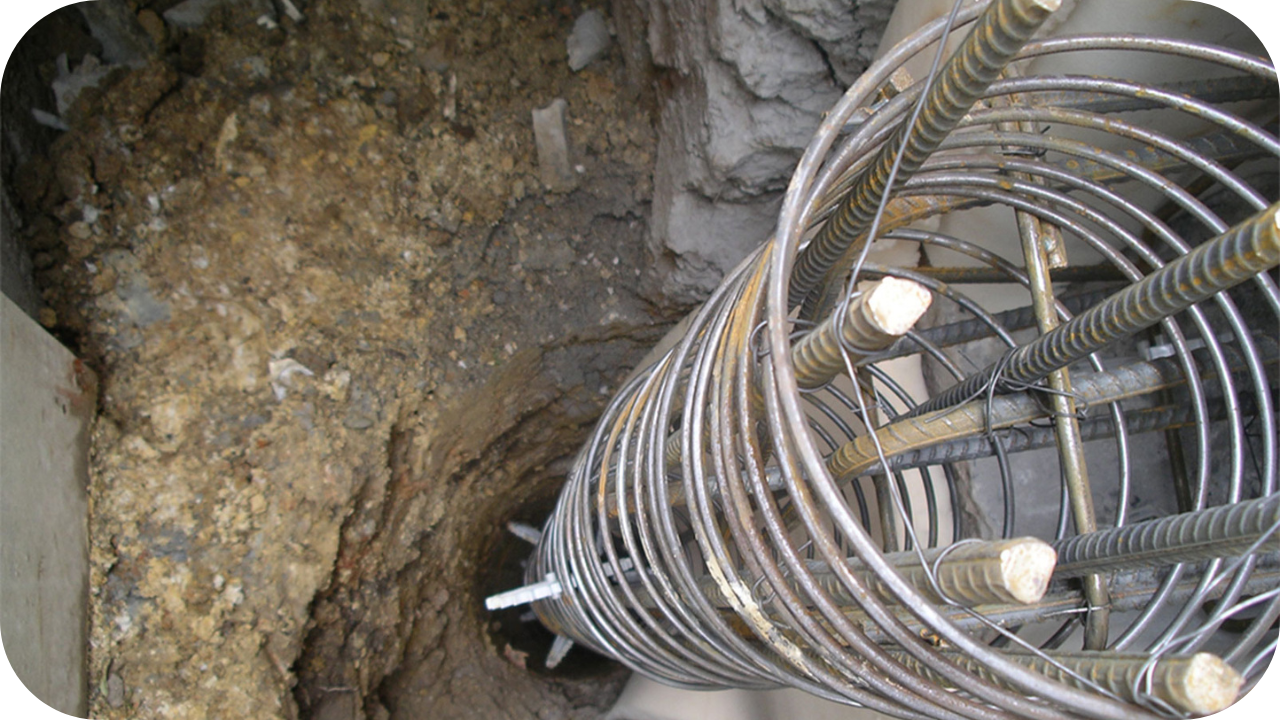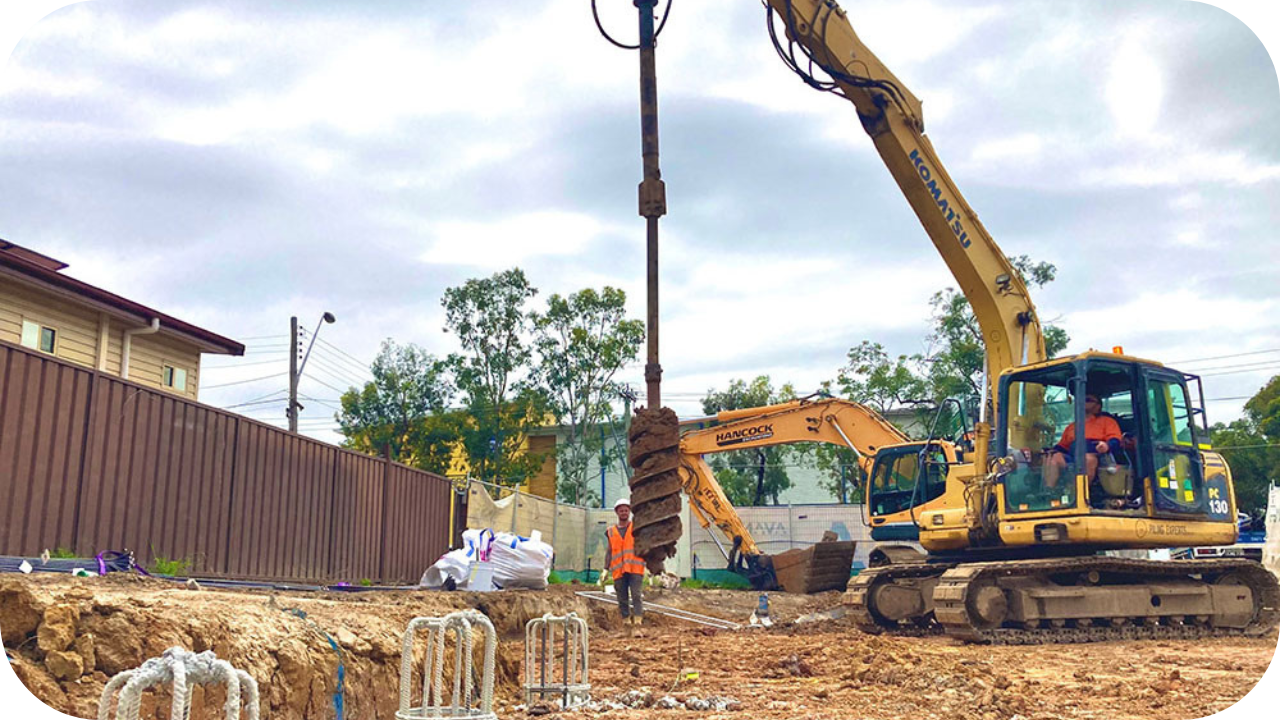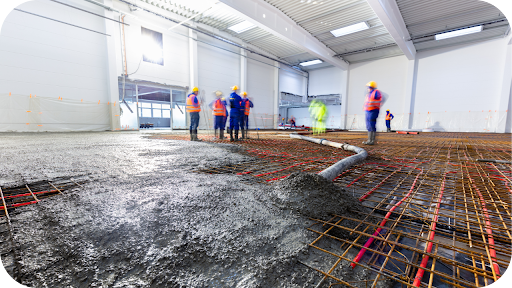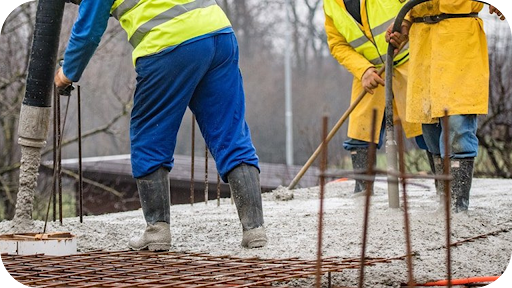

.png)
Piling and piering are both deep foundation methods designed to support structures when surface soils can’t handle the load. While piling involves driving columns deep into the ground, piering (such as bored piers) uses drilled shafts filled with reinforced concrete.
In Melbourne, where soil conditions range from reactive clay to sandy fill, choosing the right foundation system is crucial to long-term stability.
Each method offers its own strengths, and picking the wrong one can cost you. Not all foundations are created equal, especially when Melbourne’s ground keeps shifting.

Piling is a deep foundation method used to support structures when the surface soil is too weak to bear the load. It involves driving or drilling long columns, known as piles, deep into the ground until they reach a more stable layer such as compacted soil or bedrock.
This technique effectively transfers the weight of a building away from the surface and into firmer ground below.
In Melbourne, several piling methods are commonly used depending on the project type and soil conditions. Driven piles, typically made of concrete or steel, are hammered into the earth using heavy machinery.
Continuous Flight Auger (CFA) piles involve drilling into the ground with a rotating auger, then pumping concrete into the hole as the auger is withdrawn. Steel screw piles are another option, installed by twisting helical blades into the ground.
Piling is ideal for large-scale commercial or infrastructure projects, especially in areas with deep soft soils. However, it can be noisy, cause vibration, and often requires more equipment and cost than piering.

Piering is a deep foundation technique that involves creating vertical shafts, known as piers, to support structures by transferring loads to stable ground beneath weak surface soils.
In Melbourne, the most common method of piering is through bored piers. These are formed by drilling deep holes into the ground, inserting steel reinforcement cages, and filling them with concrete to create strong, load-bearing columns.
Bored piers are widely used in residential and light commercial construction, particularly for homes with basements, sloping blocks, or poor soil conditions. They are ideal for projects that require strong foundations with minimal ground disturbance.
Their installation causes less noise and vibration compared to driven piles, making them well-suited for urban and suburban environments.
Bored pier systems work best in areas with reactive clay, loose fill, or uneven terrain, all of which are common across Melbourne. While they offer design flexibility and site-specific customisation, they may require more detailed planning and geotechnical assessment than shallow footing systems.

Foundations can make or break your project, literally. While piling and piering may seem similar, choosing the wrong one for your site can lead to structural issues, delays, and ballooning costs. So, what sets them apart?
Piling involves driving prefabricated concrete, steel, or timber piles deep into the ground using heavy machinery such as pile drivers or vibratory hammers. The process is rapid and often used in large-scale developments where speed and uniformity are critical.
On the other hand, piering, particularly bored pier construction, uses drilling rigs to excavate cylindrical holes, which are then reinforced and filled with concrete.
This method allows for greater customisation and control, especially in constrained or uneven sites. While piling suits repetitive, high-volume installs, piering is better suited to projects requiring precision and minimal ground disruption.
One of the biggest contrasts between piling and piering is the level of vibration and noise produced during installation.
Piling, especially driven types, generates significant noise and ground movement, which can be problematic in densely built-up areas or near existing structures. The impact can cause nearby soil to shift and even damage adjacent properties if not managed carefully.
Piering, by contrast, is much quieter and gentler on the surrounding environment. Since it involves drilling rather than hammering, it minimises vibration and is far less likely to disturb nearby buildings, making it ideal for residential or inner-suburban Melbourne sites.
Both piling and piering are capable of supporting substantial structural loads, but their application depends on the scale and nature of the project. Piling is typically chosen for very deep foundations or when extremely heavy loads must be transferred to bedrock or compacted layers far below the surface. It’s frequently used in infrastructure and high-rise construction.
Piering, while still capable of reaching significant depths, is more commonly used in residential and low- to mid-rise developments. Bored piers can be designed to suit varying load demands, offering a balance of strength and adaptability in most Melbourne soil conditions.

Cost is often a deciding factor when choosing between piling and piering. Piling can be more expensive due to the size of the equipment involved, the need for specialised operators, and the pace at which it’s completed. However, for large commercial or industrial projects, its speed and efficiency can offset the initial outlay.
Piering generally offers a more economical solution for small- to medium-sized builds, especially on difficult sites where flexibility is needed. Its slower pace is balanced by greater precision, which can prevent costly mistakes or over-engineering. In Melbourne’s varied building landscape, piering often provides better value for residential sites.
Melbourne’s diverse geology means that one foundation system doesn’t fit all. Piling is often the better option in areas with soft, water-logged, or highly compressible soils, common near coastal zones or reclaimed land.
In contrast, piering excels in areas with reactive clay, loamy fill, or layered ground, where drilled piers can bypass unstable surface layers and reach firmer strata. Bored piers also suit sites with slope variations or limited access, thanks to the flexibility in equipment and layout.
With Melbourne’s unpredictable soil profiles, selecting the right system depends on detailed geotechnical assessments and local ground knowledge.
Piling is typically used for large-scale infrastructure, commercial towers, bridges, and industrial foundations where high loads and consistent ground conditions are expected. Its speed and depth make it ideal for repetitive, high-volume needs.
Piering, on the other hand, is well-suited for residential homes, townhouses, basement constructions, and structural retaining walls. It’s also commonly used for underpinning existing buildings and remedial work.
Because it’s quieter, cleaner, and more adaptable to awkward site conditions, piering often becomes the go-to choice for Melbourne builders working in established suburbs, tight-access areas, or challenging sloped blocks.

Choosing between piling and piering comes down to your site conditions, project scale, structural load, and surrounding environment. If you’re working on a high-rise, commercial development, or infrastructure project where deep, consistent support is essential, and space allows for large machinery, piling is often the better choice.
It offers speed and depth but comes with more disruption, making it less suited for residential areas.
On the other hand, if you’re building a home, townhouse, basement, or extension in an established Melbourne suburb, piering is likely more practical. Bored piers can be tailored to challenging soil conditions like reactive clay or fill, and they’re far less invasive during installation.
Sites near neighbouring properties or on sloping terrain also benefit from the low vibration and custom adaptability of piering. The best approach is always based on a thorough geotechnical assessment and structural engineering advice.
Ultimately, it’s not about which method is better overall, but which one works best for your unique site.
When precision, performance, and peace of mind matter, Urban Pour delivers piering done right:
Piling and piering each have their place in Melbourne’s construction landscape, but choosing the right one can make or break your project. For residential and light commercial builds, especially on reactive or sloping sites, bored pier systems offer the control and stability you need.
Urban Pour combines local expertise, precision workmanship, and full compliance to deliver foundations that last. Ready to build with confidence? Contact Urban Pour today to discuss your site requirements.

Choosing the right concrete contractor in Melbourne ensures strength, safety, and long-term value. Learn how Urban Pour delivers precision, quality, and trusted results on every project.
See more
Concrete pumping gives Melbourne builders faster, cleaner, and safer pours. Learn why it’s the go-to method for efficient, high-quality concrete placement on any site.
See more
Residential concreting gives Melbourne homes lasting strength and modern appeal. From driveways to interiors, Urban Pour delivers durable, design-focused results built for beauty and longevity.
See more